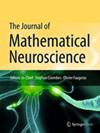色彩感知的几何学。第2部分:来自真实量子态的感知颜色和Hering的rebit。
IF 2.3
4区 医学
Q1 Neuroscience
引用次数: 2
摘要
受H.L. Resnikoff先驱工作的启发,我们给出了感知颜色空间的量子描述[公式:见文本],该工作将在本文的第一部分进行详细描述。我们证明[公式:见文本]是一个rebit的效应空间,一个真实的量子量子位,其状态空间与克莱因双曲盘是等距的。这种感知颜色的色彩状态空间可以表示为一个实维2的布洛赫盘,它与颜色对抗机制给出的赫林盘重合。感知颜色的属性,色调和饱和度,是根据冯·诺伊曼熵来定义的。本文章由计算机程序翻译,如有差异,请以英文原文为准。
Geometry of color perception. Part 2: perceived colors from real quantum states and Hering's rebit.
Inspired by the pioneer work of H.L. Resnikoff, which is described in full detail in the first part of this two-part paper, we give a quantum description of the space [Formula: see text] of perceived colors. We show that [Formula: see text] is the effect space of a rebit, a real quantum qubit, whose state space is isometric to Klein's hyperbolic disk. This chromatic state space of perceived colors can be represented as a Bloch disk of real dimension 2 that coincides with Hering's disk given by the color opponency mechanism. Attributes of perceived colors, hue and saturation, are defined in terms of Von Neumann entropy.
求助全文
通过发布文献求助,成功后即可免费获取论文全文。
去求助
来源期刊

Journal of Mathematical Neuroscience
Neuroscience-Neuroscience (miscellaneous)
自引率
0.00%
发文量
0
审稿时长
13 weeks
期刊介绍:
The Journal of Mathematical Neuroscience (JMN) publishes research articles on the mathematical modeling and analysis of all areas of neuroscience, i.e., the study of the nervous system and its dysfunctions. The focus is on using mathematics as the primary tool for elucidating the fundamental mechanisms responsible for experimentally observed behaviours in neuroscience at all relevant scales, from the molecular world to that of cognition. The aim is to publish work that uses advanced mathematical techniques to illuminate these questions.
It publishes full length original papers, rapid communications and review articles. Papers that combine theoretical results supported by convincing numerical experiments are especially encouraged.
Papers that introduce and help develop those new pieces of mathematical theory which are likely to be relevant to future studies of the nervous system in general and the human brain in particular are also welcome.
 求助内容:
求助内容: 应助结果提醒方式:
应助结果提醒方式:


